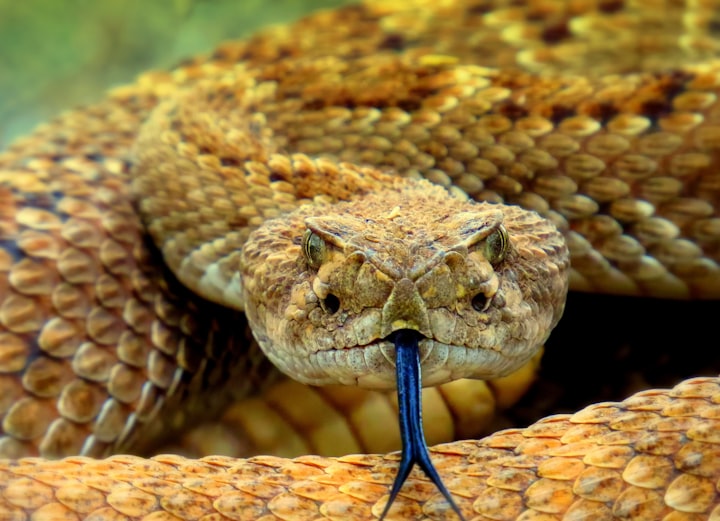Snakes, with their slithering grace and enigmatic presence, have long captivated the human imagination. While some people may recoil at the sight of these reptiles, others are fascinated by their diverse colors, patterns, and behaviors. However, encountering a snake in the wild can be a nerve-wracking experience, especially if you’re unsure of its species and potential danger. Fortunately, advancements in technology and the proliferation of online resources have made it easier than ever to identify snakes using nothing more than a photograph. In this article, we’ll explore the fascinating world of snake identification by photo, examining the tools, techniques, and resources available to amateur herpetologists and nature enthusiasts alike.
The Importance of Snake Identification
Identifying snakes serves several important purposes, ranging from personal safety to conservation efforts and scientific research. Different snake species exhibit varying behaviors, habitats, and venomous properties, making accurate identification crucial for avoiding potential encounters or mitigating risks in the event of a bite. Additionally, understanding the distribution and abundance of snake species can inform conservation strategies and habitat management practices, helping to preserve biodiversity and protect ecosystems.

While professional herpetologists possess the expertise and training to identify snakes based on physical characteristics and geographic location, amateur enthusiasts and curious individuals may lack the knowledge or resources to make accurate identifications. However, with the advent of digital photography and online databases, snake identification has become more accessible to a wider audience, empowering citizen scientists and nature enthusiasts to contribute to our collective understanding of snake diversity and distribution.
Tools and Techniques for Snake Identification by Photo
- Take Clear and Detailed Photographs: When attempting to identify a snake from a photograph, it’s essential to capture clear, high-resolution images that showcase the snake’s key features. Focus on photographing the snake from multiple angles, including its head, body, and tail, to provide comprehensive visual documentation. Pay attention to details such as coloration, patterns, scales, and markings, as these characteristics can be crucial for accurate identification.
- Consult Online Databases and Field Guides: Several online databases and field guides are available to help amateur herpetologists identify snakes based on visual cues and geographic location. Websites like iNaturalist, HerpMapper, and the Reptile Database offer searchable databases of snake species, allowing users to upload photos and receive expert feedback and identification assistance from the community. Additionally, field guides and reference books specific to your region can provide valuable information about local snake species and their distinguishing features.
- Seek Guidance from Experts: If you’re uncertain about a snake’s identification or concerned about its potential danger, don’t hesitate to seek guidance from experienced herpetologists, wildlife biologists, or local authorities. Many universities, museums, and wildlife organizations offer resources and assistance for snake identification and can provide expert guidance based on your photographs and location.
- Use Smartphone Apps: Smartphone apps like Seek by iNaturalist and Merlin Bird ID leverage artificial intelligence and machine learning algorithms to identify organisms, including snakes, from photographs. Simply upload a photo of the snake, and the app will analyze its features and provide a list of possible species matches, along with additional information about each species’ characteristics and habitat.
- Join Online Communities and Forums: Participating in online communities and forums dedicated to herpetology and wildlife observation can provide valuable support and assistance for snake identification. Platforms like Reddit’s r/herpetology and Facebook groups focused on reptile enthusiasts allow members to share photos, ask questions, and seek advice from fellow snake enthusiasts and experts.
Best Practices for Snake Identification and Safety

While identifying snakes by photo can be an exciting and educational endeavor, it’s essential to prioritize safety and responsible behavior when encountering these reptiles in the wild. Keep the following best practices in mind:
- Maintain a Safe Distance: Always maintain a safe distance from snakes and avoid approaching or handling them, especially if you’re unsure of their species or behavior. Respect their space and observe them from a distance using binoculars or a camera lens.
- Do Not Disturb or Harass: Refrain from disturbing or harassing snakes in their natural habitat, as this can stress the animals and provoke defensive behaviors. Avoid loud noises, sudden movements, or attempts to capture or handle snakes without proper training and equipment.
- Learn to Identify Venomous Species: Familiarize yourself with the venomous snake species native to your region and learn to distinguish them from non-venomous species based on visual cues and physical characteristics. Remember that not all snakes are venomous, and most species pose no threat to humans when left undisturbed.
- Report Sightings and Encounters: If you encounter a snake in the wild or observe unusual behavior, consider reporting your sighting to local wildlife authorities, conservation organizations, or online databases. Your observations can contribute valuable data to scientific research and conservation efforts.
- Educate Others: Share your knowledge and enthusiasm for snakes with others, emphasizing the importance of snake conservation, habitat preservation, and responsible coexistence with wildlife. Encourage others to appreciate snakes as vital members of ecosystems and dispel common myths and misconceptions about these fascinating reptiles.
Conclusion
Snake identification by photo represents an exciting intersection of technology, citizen science, and conservation, allowing individuals of all backgrounds to contribute to our understanding of snake diversity and distribution. By harnessing the power of digital photography, online resources, and community engagement, amateur herpetologists and nature enthusiasts can play a valuable role in snake conservation and education efforts.
Whether you’re a curious beginner or a seasoned snake enthusiast, exploring the world of snake identification can foster a deeper appreciation for these often misunderstood creatures and inspire a sense of wonder for the natural world. By following best practices for snake safety, responsible behavior, and conservation-minded stewardship, we can coexist harmoniously with snakes and preserve their vital role in ecosystems for generations to come.